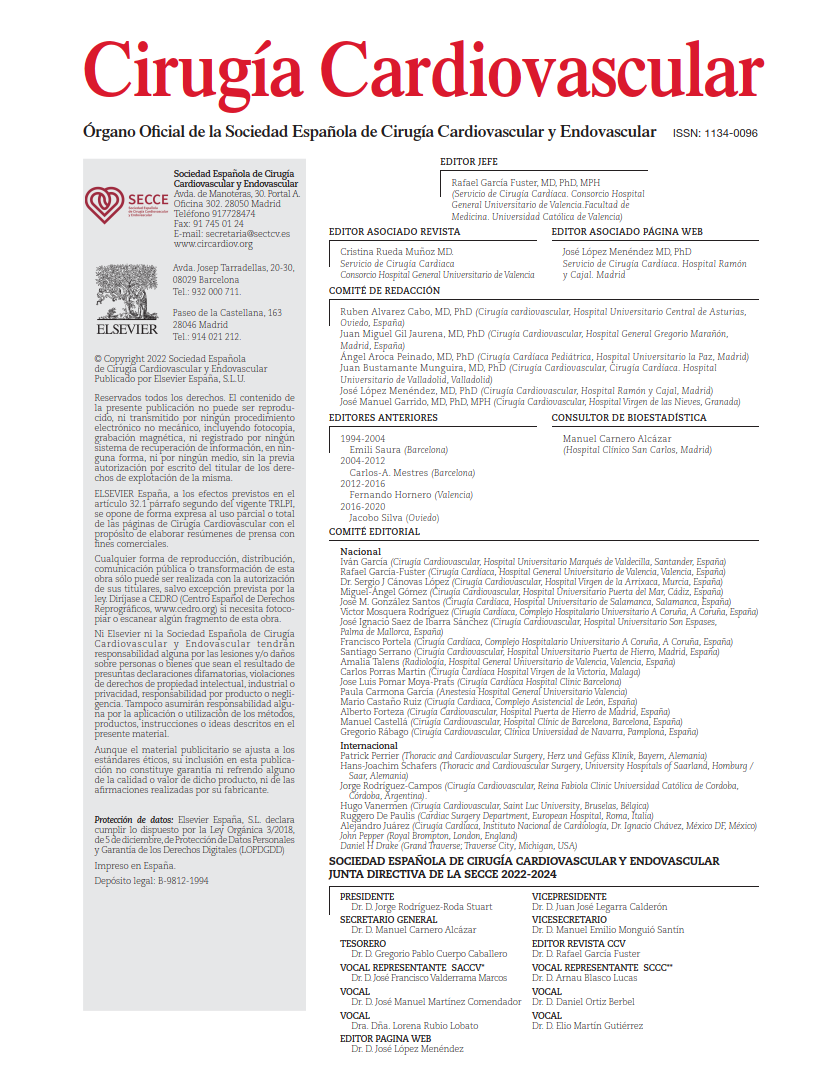It seems that the prevailing trend this summer revolves around reinterpreting data, digging into trial details, and recycling outcomes from well-known clinical studies. Remarkably, in 2025, instead of presenting the long-awaited 5-year outcomes of the Evolut Low Risk trial—as was recently done for the PARTNER 3 trial—a new post hoc publication resurfaces, again focusing on the 4-year data, with yet another creative twist.
In this case, 17.7% of the original sample was excluded: 121 surgical patients who received the Abbott/St. Jude Trifecta® prosthesis, plus one additional patient from the TAVR arm who, after randomization, crossed over to surgery and received the same valve. The authors euphemistically refer to the surgical arm as receiving “contemporary surgical prostheses,” thus allowing themselves to undertake a new analysis.
The presentation of the study emulates the structure of a pseudo-randomized trial, deriving from the original design. However, despite the weight placed on this reanalysis, it remains fundamentally observational. The group sizes are now unequal (729 vs 563), with minimal detail regarding baseline characteristics and no clear indication of whether intergroup differences are statistically significant. Moreover, the absence of any adjustment methodology—however imperfect—undermines the validity of this new evaluation.
The results are presented via a single Kaplan-Meier analysis focusing on the composite endpoint of all-cause mortality and disabling stroke—the same endpoint used in previous reports of the trial. The curves display a diverging trend that compounds the initial disadvantage consistently observed in the surgical cohort, favoring TAVR with statistical significance. However, examining the appendix reveals that mortality rates were essentially identical between groups: 15 vs 15 deaths in year one, 10 vs 8 in year two (TAVR vs surgery), 23 vs 21 in year three, and 17 vs 17 in year four. Loss to follow-up was more pronounced in the surgical cohort (55 patients vs 31 in the TAVR group after 4 years), an imbalance left unexplained. This reduced denominator inflates the percentage-based outcomes used in the Kaplan-Meier curve, leading to the exaggerated differences observed.
The appendix also provides data on quality of life and functional class, which were comparable between the TAVR and surgical groups, except during the first 6 months, when patients undergoing TAVR reported better scores on the KCCQ scale. The last highlighted outcome underscores the supposed hemodynamic advantage of TAVR, namely a lower rate of significant prosthesis-patient mismatch (19.7% vs 11.1%). This finding contrasts with the echocardiographic substudy from PARTNER 3, previously reviewed, which did not favor TAVR over surgery. However, the specific design of the self-expanding valve may confer a hemodynamic advantage. That said, the inclusion of porcine bioprostheses in the surgical series, as further discussed below, likely contributed to a poorer profile for the surgical arm. In PARTNER 3, the devices used were homogeneous: Sapien 3® for TAVR and Magna Ease® for surgery.
Unsurprisingly, the authors omit key outcomes such as paravalvular leak rates, pacemaker implantation, stroke incidence reported with the same granularity as mortality, or rehospitalization rates, which ultimately makes this analysis difficult to digest.
COMMENTARY:
The brief analysis presented effectively achieves its aim: to showcase, in 2025, a nearly statistically significant and visually striking Kaplan-Meier curve comparing outcomes between TAVR and surgical prostheses, under the pretense of an update involving “contemporary surgical prostheses.”
Instead of fulfilling the expected scientific duty of transparently updating the 5-year results from a trial of such relevance—with full disclosure of raw data—the authors resort to a statistical artifice by reducing the surgical cohort. This maneuver conveniently distorts all percentage-based outcomes derived from that arm. If adverse events were unevenly distributed among excluded or lost-to-follow-up patients, the perfect conditions would be set to yield the desired result. Loss to follow-up plays a pivotal role here: when comparing the 4-year curves in this analysis to those in the original trial, trends remain virtually identical at each yearly event threshold. Thus, the exclusion of Trifecta® valves does not appear to be the decisive factor.
Rather, the removal of Abbott/St. Jude Trifecta® prostheses seems more like a way to silence criticism from surgical advocates, who had deemed their inclusion inappropriate, particularly after these devices were withdrawn from the market due to mid- and long-term structural valve deterioration. Nevertheless, despite the fact that 56.7% of surgical prostheses were from Edwards®, the remaining ones were notably diverse: Medtronic® (Avalus® or Mosaic®, 10.9%), Abbott® (Epic®, 18.6%), and Livanova® (Perceval®, 13.8%). Consequently, the surgical cohort encompassed models with limited clinical experience (such as Avalus®), porcine bioprostheses (Epic® and Mosaic®), and sutureless valves. Comparing this heterogeneous mix to a uniform group implanted exclusively with a single self-expanding TAVR device clearly leads to an imbalanced and unjust comparison.
It remains debatable whether this stream of post hoc literature offers any genuine scientific value. It certainly appears to favor the publication of secondary analyses only when aligned with the desired commercial or editorial narrative—an unmistakable example of publication bias. At the same time, these studies leverage the credibility of expensive randomized trials, only to dilute their rigor into observational cohorts masquerading as randomized evidence.
To date, we are still awaiting the 6-year follow-up results of the PARTNER 3 low-risk trial and the 5-year data from Evolut Low Risk. Hopefully, commercial and editorial interests will not deem current follow-up periods sufficient to define low-risk surgical management strategies in clinical guidelines. Until then, we have little choice but to continue digesting these “heavy meals.”
REFERENCE:
Ramlawi B, Deeb GM, Mumtaz M, Bajwa T, Rovin JD, Yakubov SJ, et al. Four-year outcomes after transcatheter or contemporary surgical aortic valve replacement from the Evolut Low Risk trial. J Thorac Cardiovasc Surg. 2025;170:e16–26.



